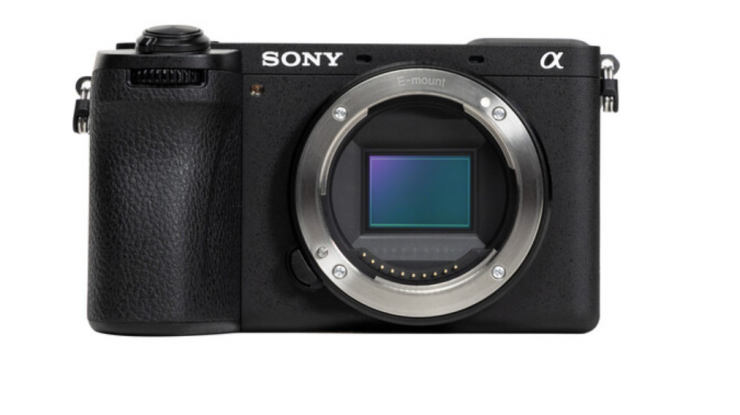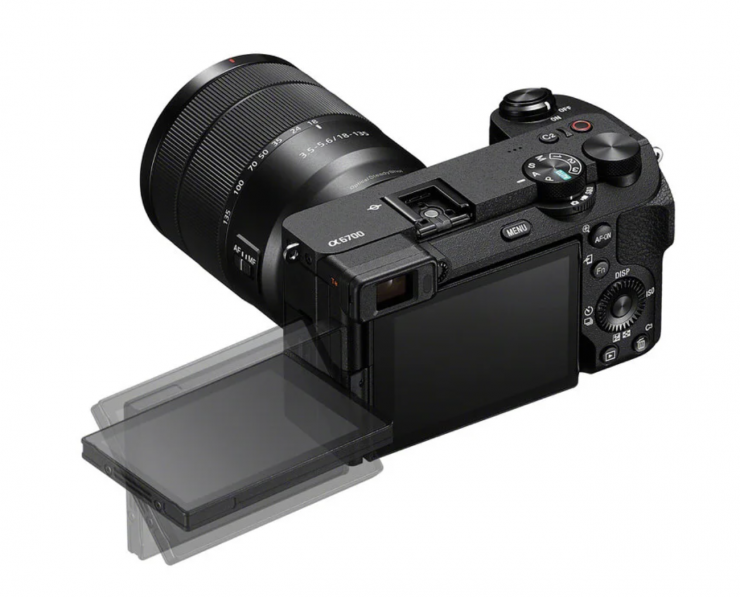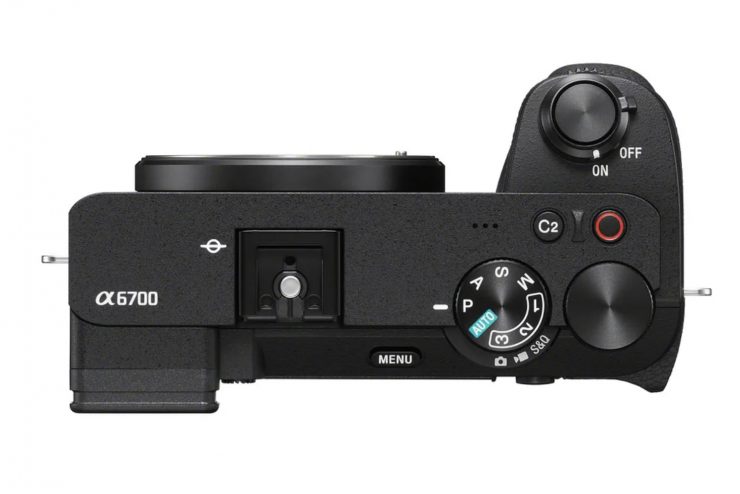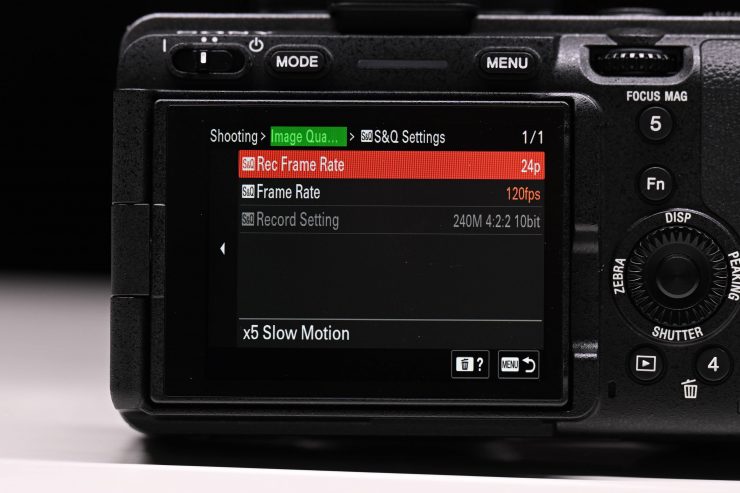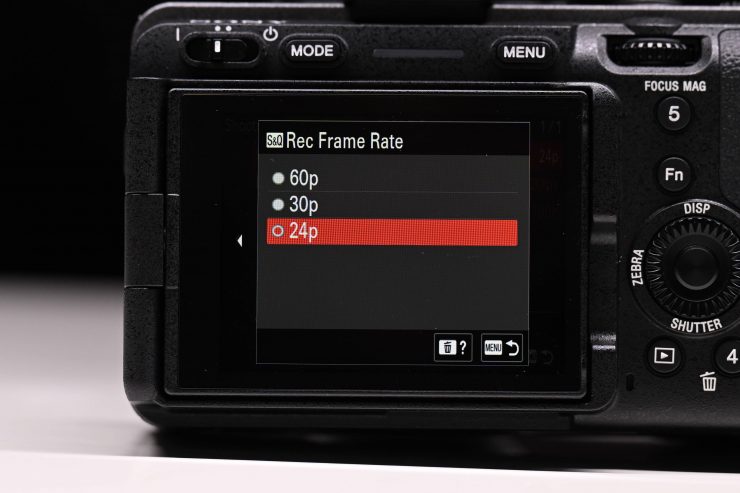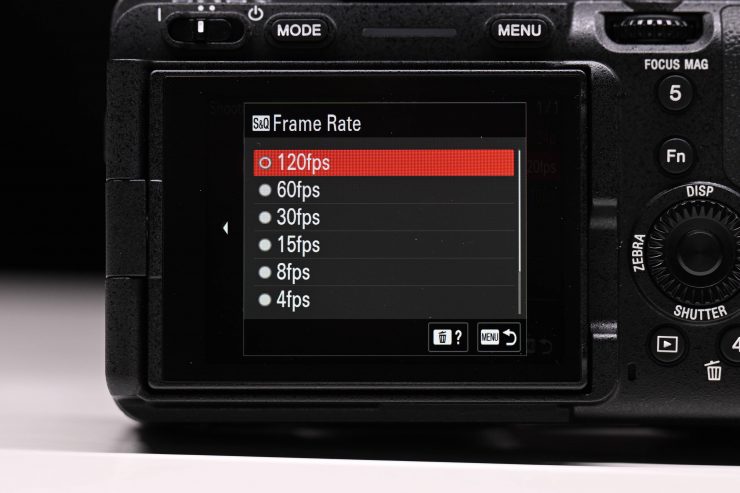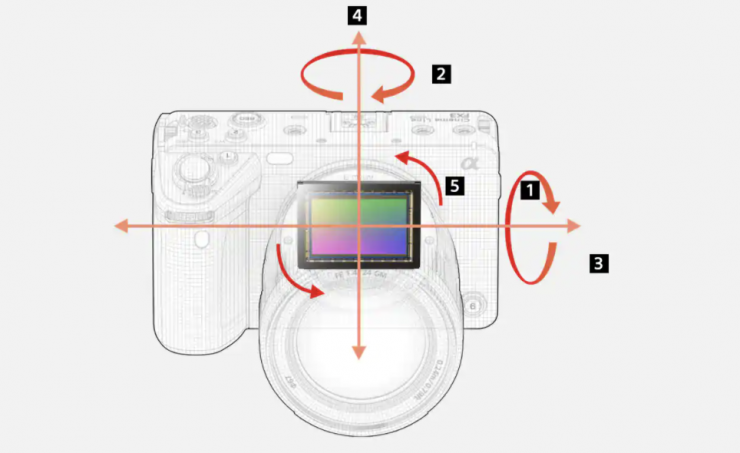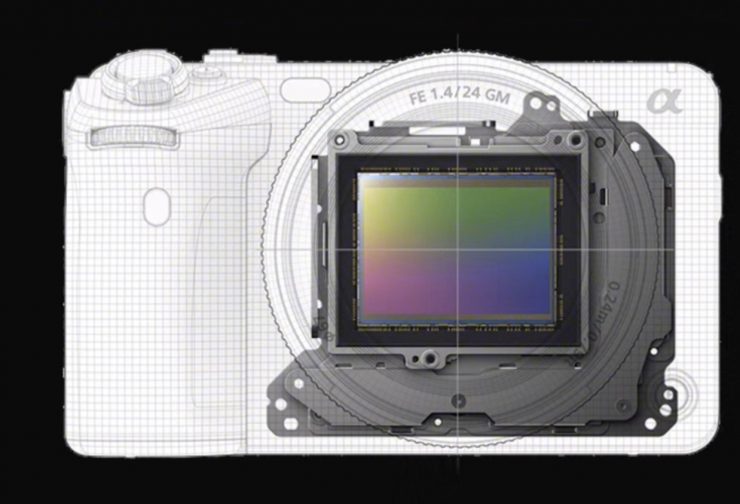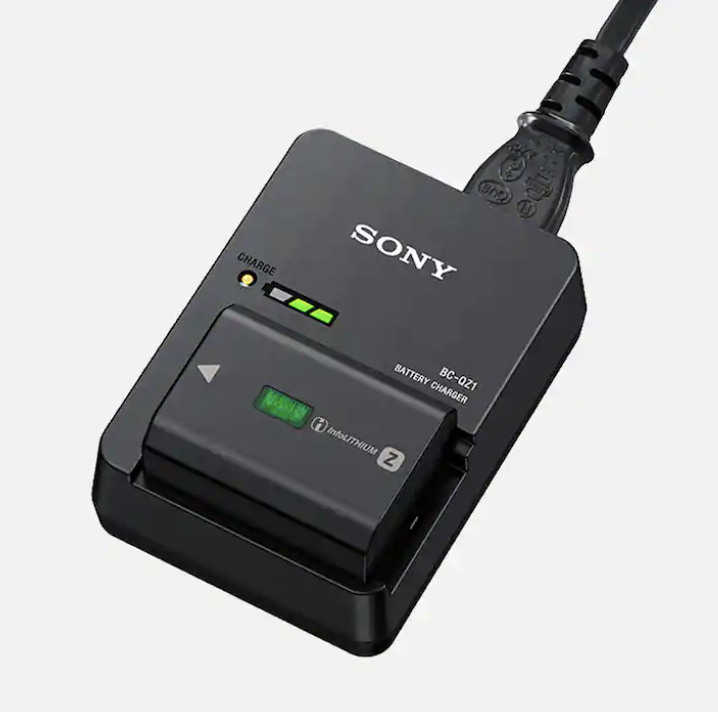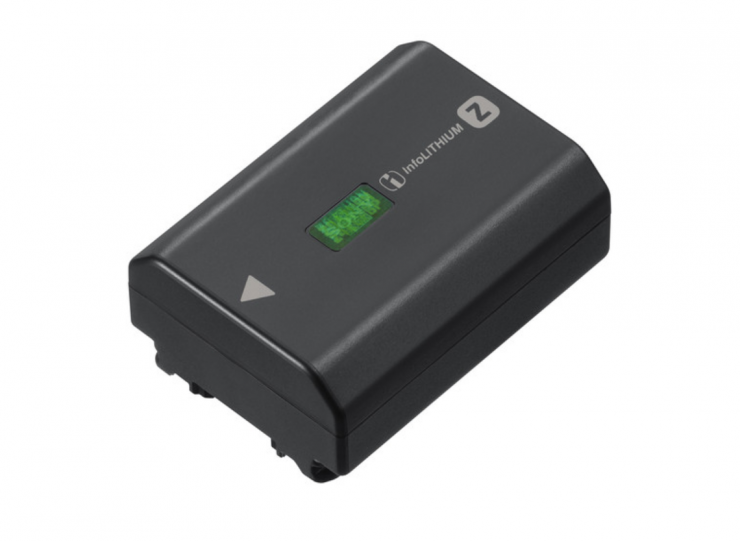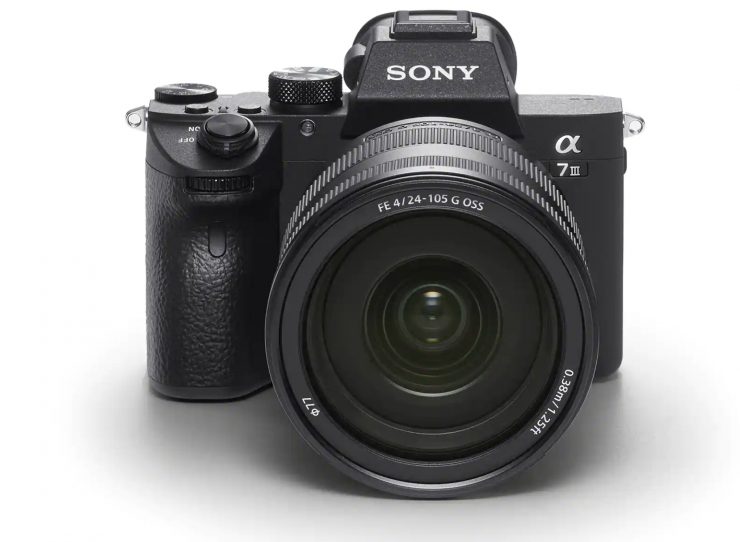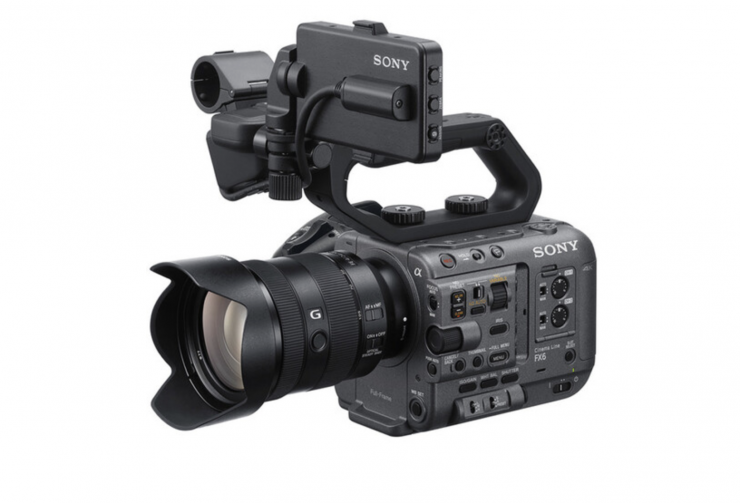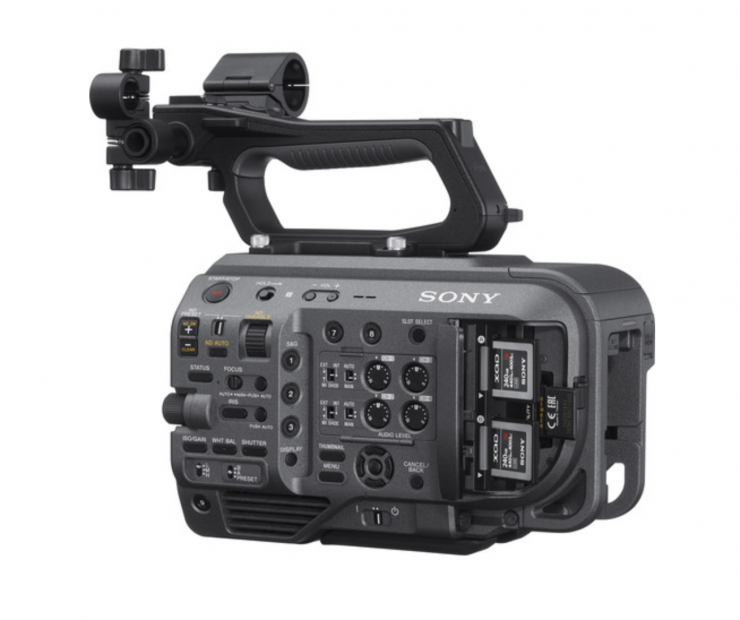Sony has announced its new a6700 APS-C Mirrorless Camera. Essentially it doesn’t have as much in common with the FX30 as you may think. While it shares a similar (if not the same) sensor as the FX30 and some very decent recording capabilities, it lacks a lot of the features that make that camera more suitable for anyone shooting video.
Key features
- 26MP APS-C Exmor R Sensor
- BIONZ XR Processor
- AI-Based Real-time Tracking
- 759-Point Autofocus
- 4K 120p Video
- 6K Oversampling
- S-Cinetone
- 4:2:2 10-Bit
- Up to 11 fps Shooting
- 5-Stop In-Body Image Stabilization
- Refined Grip
- Z-Battery
- Dust & Moisture-Resistant Design
Size & Weight
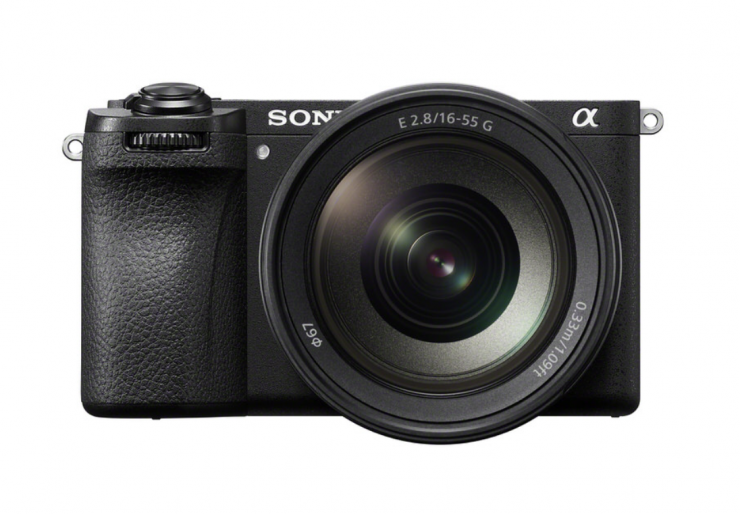
The a6700 is pretty small, it tips the scales at 1.1 lb / 493 g (With Battery, Recording Media) and it has physical dimensions of 4.8 x 2.7 x 2.5″ / 122 x 69 x 63.6 mm.
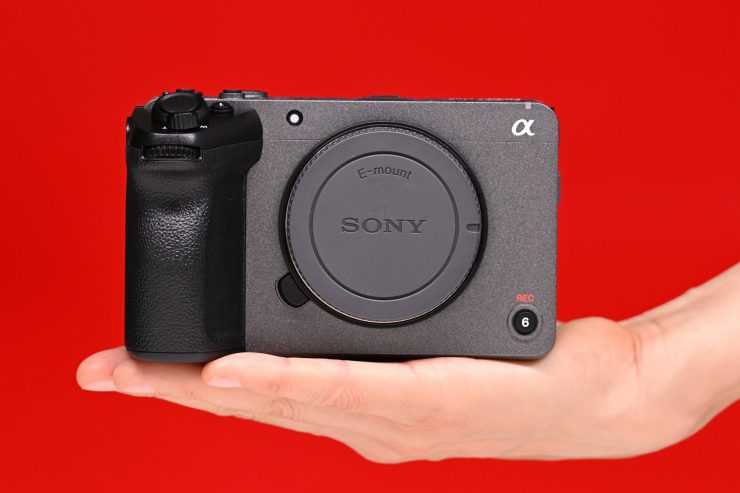
As a comparison, the FX30 weighs 562g (body only) / 19.82 oz. With a battery and memory card, it weighs 646g / 22.78 oz. The camera has physical dimensions of 129.7mm x 77.8mm x 84.5mm (L x H x W9.
Sensor
The a6700 uses a 3:2 APS-C 26 megapixel back-illuminated CMOS Exmor R 4K sensor which looks to be the same or similar to the one used in the FX30. Now, that 26MP is only available when shooting stills. When shooting video in a 16:9 aspect ratio the effective megapixels being used is 19.9MP.
The a6700 is able to record UHD video (3840×2160) at up to 60p from an oversampled 6K image (5976×3356) with no pixel binning or line skipping.
If you want to record UHD at 100/120p then it does so with an additional 1.6x crop.
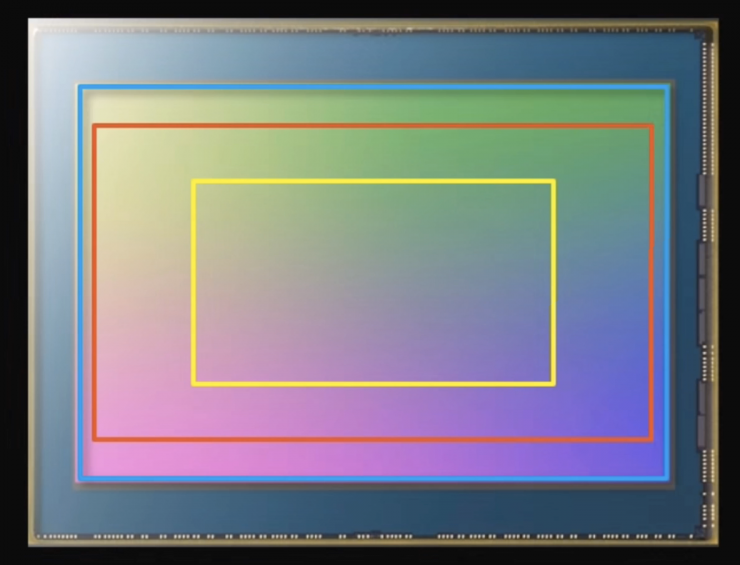
Above, the blue line indicates the 3:2 6192×4128 (26MP) still area. The orange line indicates the 16:9 UHD movie recording area when shooting up to 59.98p. The yellow lines indicate the UHD 100/120p crop area.

Above you can see the difference between a standard sensor (on the left), and a back-illuminated sensor on the right. Back-illuminated technology places the metal wiring of the photodiode beneath the diode instead of above it. Back-illuminated sensors offer increased sensitivity and less noise.
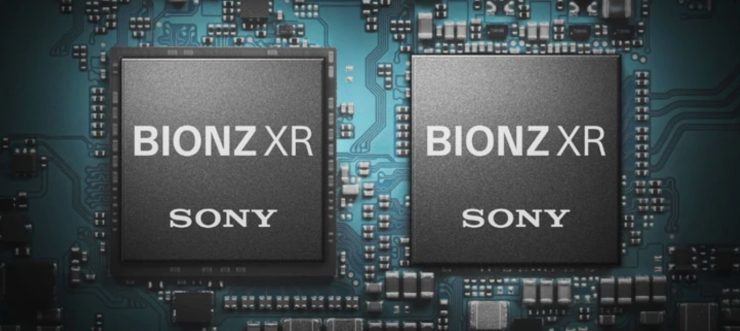
The a6700 utilizes the same BIONX XR image processor that is found in the a7S III, FX3, FX30, and FX6. The processor is claimed to be able to read the sensor 3x faster than the a7S II and 2x faster than most traditional mirrorless hybrid sensors. This processor is claimed to be 4x faster than the one that was used in the FS5.
The a6700, just like the FX30, has roughly 66% more pixels than the FX3, so it will be interesting to see if the sensor readout is as fast, and what the rolling shutter performance is like. Sony does claim that the readout speed is very fast and that the camera has minimal rolling shutter.
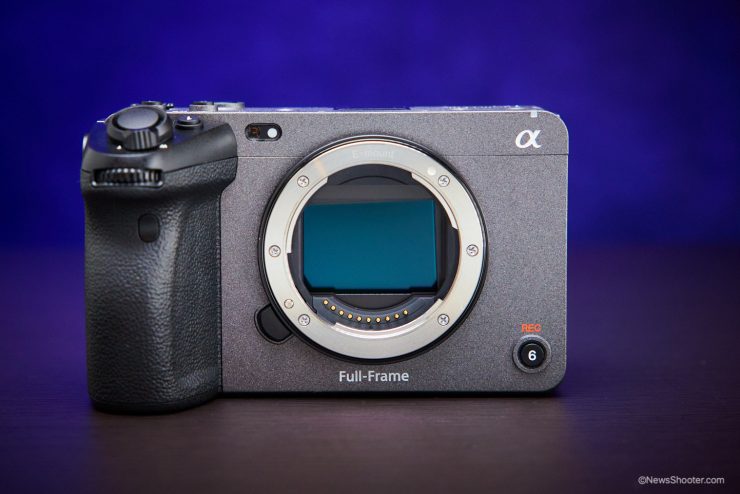
The biggest downside with the FX3, is that because it utilizes a smaller megapixel 4K sensor it can only shoot UHD in full-frame. If you switch to the 1.5x S35 shooting mode you are limited to recording in HD.
For anybody working in news, documentaries, or even events, having an APS-C sized sensor camera makes a lot of sense. You can use lighter, more affordable lenses that have a greater focal range than their full-frame counterparts.
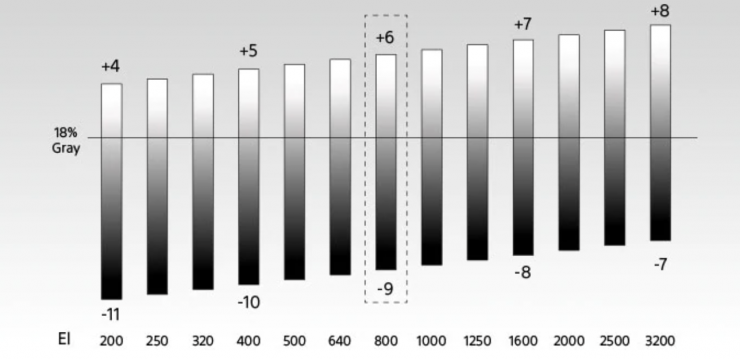
Sony is claiming 14+ stops of dynamic range from the a6700, but I would take that figure with a grain of salt. Most manufacturers exaggerate their camera’s real dynamic range. This is about a stop less than the FX3 and the same as the FX30.
Sony was also keen to stress that all of the cameras in the Cinema Line have similar color science and that they have all been designed to match. Given the FX30 has S-Cinetone, if you were also using the FX3, FX6, or FX9 with S-Cinetone also selected, the cameras should match up pretty well.
The sensor in the FX30 isn’t going to be as good as the FX3 in very low-light environments. The maximum ISO the camera is capable of is 32,000 ISO. As a comparison, with the FX3 you can go up to 102,400 ISO (expandable to 409,600).
How does it compare to an FX30?
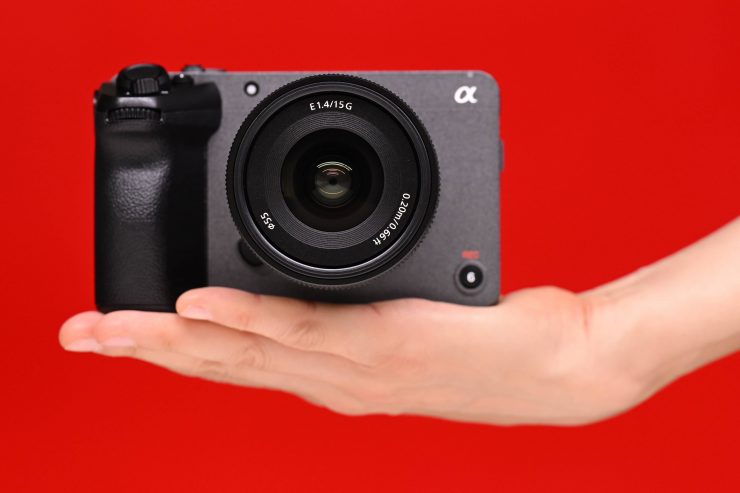
Well, let’s have a look.
| a6700 | FX30 | |
| Sensor | 26MP APS-C Exmor R Sensor | 26.1MP APS-C Exmor R Sensor |
| Processor | BIONZ XR Processor | BIONZ XR processor |
| Video | 6K Oversampling 4K 120p 4:2:2 10-bit | 6K Oversampling 4K 120p 4:2:2 10-bit |
| AF | 759-Point Autofocus | 495-Point Autofocus |
| I.S | 5-Stop In-Body Image Stabilization | 5-Stop In-Body Image Stabilization |
Dual Base ISO?
The a770 doesn’t have a dual-base ISO like the FX30.
What can it record?
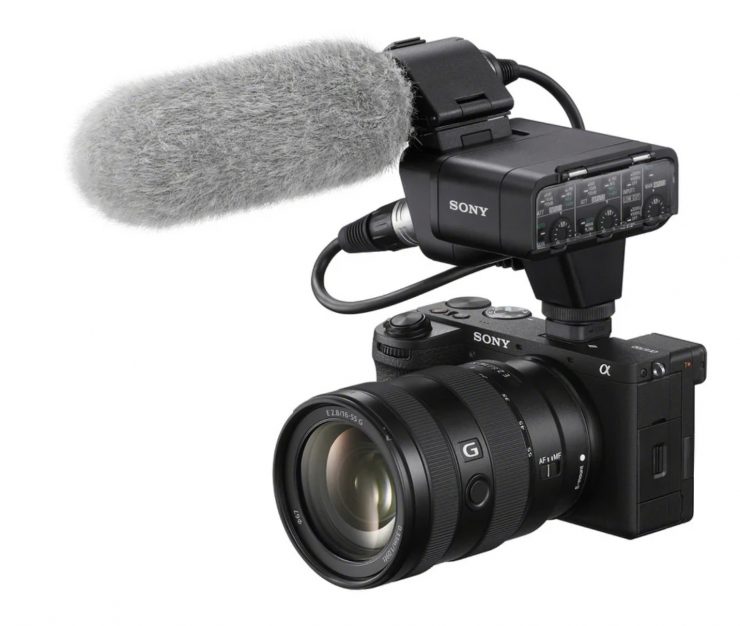
The a6700 features similar recording capabilities as the FX30, but it can’t record in the same codecs. It can record in UHD or HD in various flavors of XAVC at up to 600Mb/s.
There are no options to record in 4K DCI.
These are the following codec choices that are available in UHD:
- XAVC HS
- XAVC S
- XAVC S-I
If you are shooting in HD you can choose from:
- XAVC HS
- XAVC S
- XAVC S-I
XAVC S is a subset format, using many of the superlative techniques and technologies used in XAVC, but it is intended for consumer products and workflows. It supports 1920×1080 HD and the 3840×2160 pixel version of 4K, known as Quad Full HD, QFHD, UltraHDTV or UHDTV. XAVC S is a lighter codec with Long GOP compression and relatively small recorded file sizes. XAVC S uses the .MP4 file wrapper for greater compatibility and suitability in consumer workflows.
You may be familiar with XAVC and XAVC S, but the new flavors are XAVC, XAVC HS, and XAVC S-I.
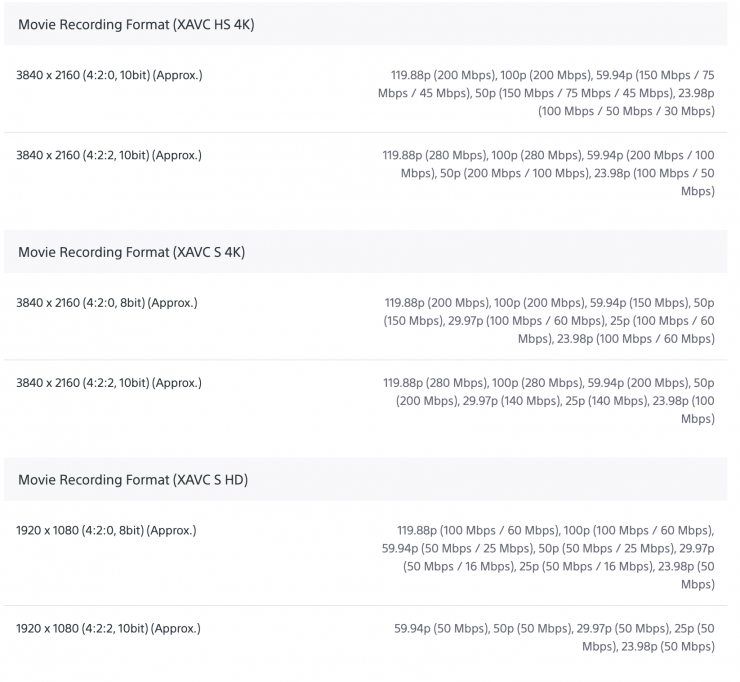
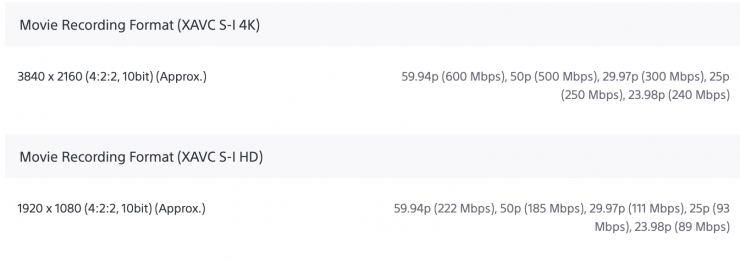
XAVC-HS uses H.265 compression so that file sizes are no more than 200 Mb/s. It is claimed to offer twice the efficiency of XAVC S but with the same level of quality. Even 4K 120p can be recorded in XAVC S-I.
You can record all these XAVC options to a V90 speed-rated SDXC card. If you are not recording in XAVC S-I you can use slower rated SD cards.
If you don’t want to record in 4:2:2 10-bit you can also choose to record in 4:2:0 10-bit or 4.2.0 8-bit at lower bitrates as well.
H.265/XAVC HS 4:2:2 10-Bit
UHD 4K (3840 x 2160) at 23.976p/25p/29.97p/50p/59.94p/100p/119.88p [50 to 280 Mb/s]
H.265/XAVC HS 4:2:0 10-Bit
UHD 4K (3840 x 2160) at 23.976p/25p/29.97p/50p/59.94p/100p/119.88p [30 to 200 Mb/s]
H.264/XAVC S-I 4:2:2 10-Bit
UHD 4K (3840 x 2160) at 23.976p/25p/29.97p/50p/59.94p [240 to 600 Mb/s]
Full HD (1920 x 1080) at 23.976p/25p/29.97p/50p/59.94p [89 to 222 Mb/s]
H.264/XAVC S 4:2:2 10-Bit
UHD 4K (3840 x 2160) at 23.976p/25p/29.97p/50p/59.94p/100p/119.88p [100 to 280 Mb/s]
Full HD (1920 x 1080) at 23.976p/25p/29.97p/50p/59.94p/100p/119.88p [50 Mb/s]
H.264/XAVC S 4:2:0 8-Bit
UHD 4K (3840 x 2160) at 23.976p/25p/29.97p/50p/59.94p/100p/119.88p [60 to 200 Mb/s]
Full HD (1920 x 1080) at 23.976p/25p/29.97p/50p/59.94p/100p/119.88p [16 to 100 Mb/s]
SLOW & QUICK MOTION (SHOOTING FRAME RATE)
NTSC mode: 1 fps, 2 fps, 4 fps, 8 fps, 15 fps, 30 fps, 60 fps, 120 fps, 240 fps, PAL mode: 1 fps, 2 fps, 3 fps, 6 fps, 12 fps, 25 fps, 50 fps, 100 fps, 200 fps
In S&Q mode you set your base recording frame rate and then you set how many fps you want to record.
Please be aware that there is an additional crop when shooting UHD at 100/120fps which I will talk about a little later on.
These are all good options and it is nice to see that Sony has offered shooters a variety of different forms of XAVC to choose from depending on what their needs may be. I also like that the recording modes are exactly the same as in the FX30 and FX3.
On paper, the a6700, FX30, and FX3 offer you higher frame rates in UHD than the more expensive FX9. The only way to get UHD 120P out of the FX9 is via the expensive and cumbersome XDCA-FX9 extension kit and record it externally to an Atomos product.
The a6700 also offers proxy recording and it can utilize the same timecode accessory that works with the FX30.
What can it output over HDMI?
The camera features a Micro HDMI cable and not a full-sized one like the FX30. Below is what the camera is capable of outputting over HDMI:
4:2:2 10-Bit
UHD 4K (3840 x 2160) at 23.976p/25p/29.97p/50p/59.94p
Full HD (1920 x 1080) at 23.976p/50p/59.94p
Full HD (1920 x 1080) at 50i/59.94i
4:2:0 8-Bit
UHD 4K (3840 x 2160) at 23.976p/25p/29.97p/50p/59.94p
Full HD (1920 x 1080) at 23.976p/50p/59.94p
Full HD (1920 x 1080) at 50i/59.94i
What media does it use?
Unlike the FX30, FX3, a7S III, and FX6, which have dual card slots and can utilize CFexpress type A cards and Sd cards, the a7700 only has a single SD card slot.
The a6700 has a single SD card slot.
No anamorphic
Just like the FX9, FX6, FX3, FX30, and a7S III, the a6700 isn’t capable of recording in any anamorphic modes. That is reserved for VENICE and VENICE 2.
It is slightly odd that Sony hasn’t embraced anamorphic recording options given the fact that we are seeing so many affordable anamorphic lenses now coming to market and that other competing camera companies such as Panasonic do.
But it’s only 4K
In some ways releasing a camera in 2023 that can only record 4K when a lot of your competition is doing 6K and 8K might at first seem like a strange decision. However, how many people actually need greater than 4K at this point in time? The majority of the content you consume is either HD or UHD, and that is unlikely to change anytime soon. Yes, you could very well argue that capturing at a higher resolution allows for more flexibility with reframing in post or downsampling to get a better 4K image, and those are good arguments, however, if you are capturing in 4K and still delivering in HD (which a lot of people are) you don’t necessarily need resolutions above 4K depending on what you are doing.
With the a6700 it is downsampling from a 6K image to record 4K. This is exactly what the FX30 and FX9 do. Conversely, with the FX3/FX6/a7S III you are getting 4K from a 4K-sized sensor.
The worst argument I always hear in regard to resolution is that I am future-proofing my material. Is historical content not being shown anymore because it was captured in black and white, or 4:3 or SD? Of course not. Future-proofing my footage is a ridiculous argument, especially considering the majority of peoples’ work isn’t something that needs to be preserved and shown in 20 years’ time. In my opinion, there is no such thing as future proof. Again there is nothing wrong with wanting to capture something in the highest quality possible, but just don’t use the future-proof argument.
Eye-popping specifications and marketing hype sell cameras, and while the a6700 arguably may not have specifications that leap off the paper, it is still bound to be a popular camera, especially for entry-level users and content creators, which is really who this camera is being targeted at.
Remember, a camera is just a tool, and it’s not going to magically make you a better shooter. Sure it can certainly help, but it is up to you to get the best out of it.
Auto Focus
The a6700 looks to feature a better AF system than the FX30 and FX3. However, just like the FX30, FX3, FX6, and a7S III, it utilizes a next-generation sensor chipset that provides much improved AF with face detection and Eye-AF.
The enhanced Fast Hybrid AF system has customizable AF transition speeds and sensitivity settings and also combines phase-detection AF for fast, accurate subject tracking with contrast AF for exceptional focus accuracy. The dedicated 759-point phase-detection AF sensor is a lot more than the 495-point system used on the FX30. Sony claims that this provides consistently accurate, responsive AF tracking, even with fast-moving subjects while maintaining a shallow depth of field.
What is interesting is that the more affordable a6700 has a better AF system than the one being used in the FX30, FX3, a7S III, and a7IV.
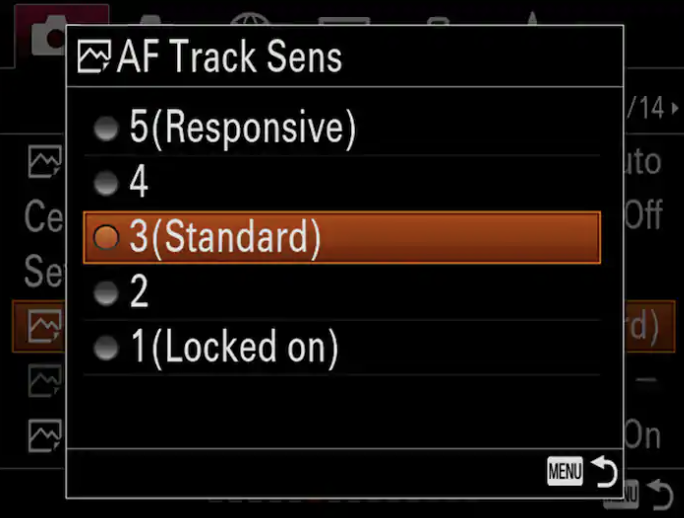
There are five-level AF transition speeds from fast-switching between subjects as quickly as possible to slow, where speed is reduced to fit a more measured shooting style.
Five-level AF subject shift sensitivity ranges from locked-on, ignoring other moving subjects in the frame, to responsive, that switches focus from one subject to another.
The AF works in all resolutions and all frame rates, including UHD at 120p and HD up to 240p. The AF system is also claimed to work really well in low light situations. Sony has really improved its AF technology in recent years and it is sure to be a big selling point for people who are looking at the FX30.
| AUTO FOCUS TYPE | Hybrid AF (phase-detection AF / contrast-detection AF) |
| FOCUS POINTS | 759 points (phase-detection AF) |
| FOCUS SENSITIVITY RANGE | EV-6 to EV20 (ISO 100 equivalent with F2.0 lens attached) |
| FOCUS MODES | AF-A (Automatic AF), AF-S (Single-shot AF), AF-C (Continuous AF), DMF (Direct Manual Focus), Manual Focus |
| FOCUS AREA | Wide / Zone / Center / Flexible Spot / Expanded Flexible Spot / Tracking |
| EYE AF | [Still images] Human (Right/Left Eye Select) / Animal, [Movie] Human (Right/Left Eye Select) |
| OTHER FEATURES | Predictive control, Focus lock, AF Track Sens. (Still), AF Subj. Shift Sensitivity (Movie), AF Transition Speed (Movie), Switch V/H AF Area, AF Area Regist., Circ. of Focus Point |
| AF ILLUMINATOR | Approx. 0.98 ft – approx. 0.98 ft (with FE 28-70 mm F3.5–5.6 OSS lens attached) |
5 Axis In-Body Image Stabilization
The a6700, just like FX30, FX3, and a7S III, utilizes an enhanced 5.5-stop effective 5-axis SteadyShot image stabilization system, which compensates for five different types of camera shake. This is something the FX6 doesn’t have.
The a6700 is just the third Sony digital cinema camera to feature 5-axis in-body stabilization. Given the small size of the a6700, it is nice to see that it does have this feature as you tend to see a lot of micro jitters when using small-sized cameras that don’t feature 5-axis in-body stabilization.
The camera also has the same Active Mode setting that is found in the FX30, FX3 and a7S III. The Active Mode results in a slight image crop but it won’t work in any frame rates of 100 and above. There is also a Standard setting that Sony recommends you use if you have a lens with a focal length of 200mm or greater.
No Locking E-Mount
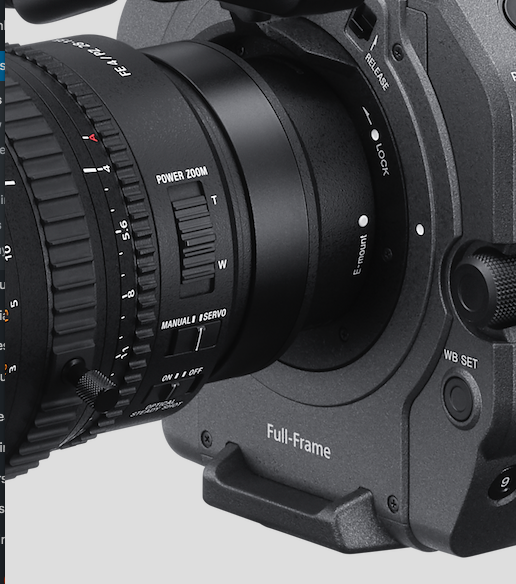
FX9 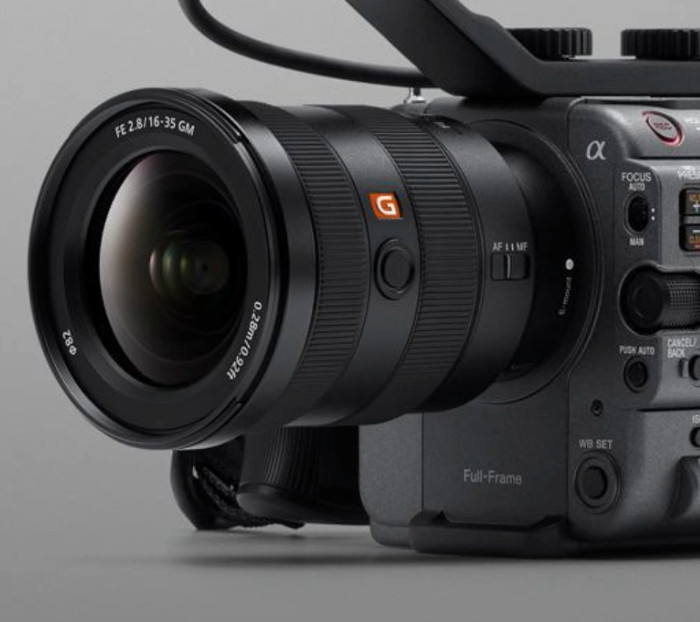
FX6
In no real surprise, that the a6700, just like the FX30, FX3, and FX6, doesn’t have the same locking E-mount that is found on the FS7 M2 and FX9. It features a regular E-mount. This mount is fully compatible with E-Mount lenses and supports all electronic connections.
Not having a locking E-mount means you really do need to use lens support for certain larger lenses. With a locking mount, it reduces lens play and allows you to use most 35mm lenses including PL, EF, Leica, and Nikon via optional adapters. That stronger E-mount is also handy for using heavier-long cine-zooms without having to add additional lens support.
Personally, I don’t think it is of any real concern that this camera doesn’t have a locking E-mount given its target audience.
Touchscreen Operation
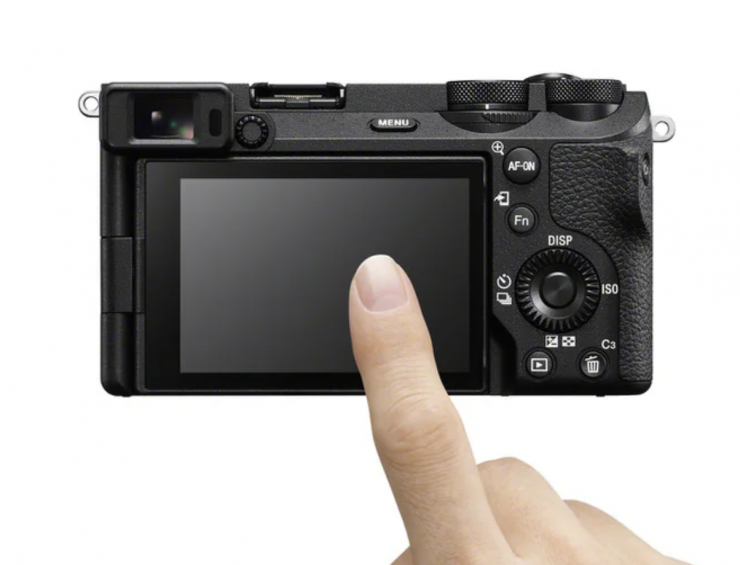
Just like the FX30, FX3, and a7S III, the a6700 has the same touchscreen operation available from its LCD screen. This allows you to access menu features and make changes to certain camera parameters.
It also allows you to use touch AF directly on the screen.
Power Draw & Batteries
The a6700 utilizes the same Sony NP-FZ100 batteries as the FX30, FX3 and a7S III.
You can also power the camera via a USB-PD. this allows you to keep the camera powered up for extended periods of time. You do need to have the battery in the camera when you do this. While it won’t charge the battery while you are doing this, it will not drain the battery either.
PD-compatible USB chargers and mobile batteries can be connected to the camera’s USB Type C port, to supply power or to recharge the internal battery at 3 to 4-times the speed of conventional power supplies.
Audio
Audio functionality is very important, especially with cameras that are being aimed at solo operators. Sony has clearly thought this through and by making use of their existing XLR adapter module technology they are able to offer users a pretty good solution.
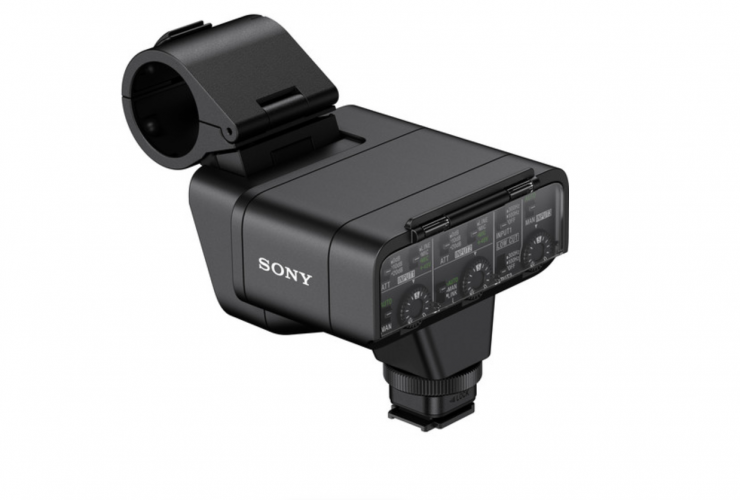
By utilizing the MI hot shoe you can add an optional audio module directly to the camera body.
Below are some of the options you could use for recording four channels of audio:
- XLR Input 2-channels + Internal microphone (2 channels)
- XLR Input 2-channels + Internal Microphone + 3.5mm mic input
- XLR Input 2-channels + Stereo splitter cable going into the 3.5mm mic input
If you go into the Quick Audio menu you can control and adjust all four channels of audio. There is also a menu for 4ch Audio Monitoring that allows you to select the audio channel combination to output to the
headphone terminals when the audio channel number is set to 4ch.
Connectivity & Remote Control
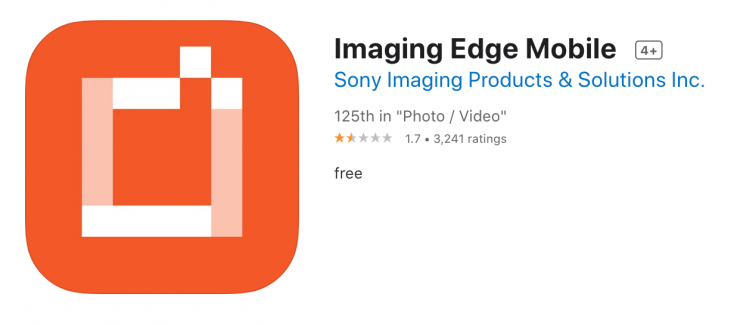
Unlike the FX6, FX9, and VENICE, the a6700 doesn’t work with Sony’s Content Browser Mobile. Instead, you need to use Imaging Edge just like the rest of the Alpha series cameras do.
For remote control, you can use either Imaging Edge Desktop or Imaging Edge Mobile.
The camera also features the following connectivity:
- Wireless LAN (Wi-Fi) 2.4GHz and 5GHz (2×2 MIMO)
- Wired LAN via compatible USB-Either adapter (1000BASE-T)
- USB connection via USB-C terminal (Superspeed USB 5Gbps)
- Mobile Tethering (LTE 4G/5G) via Wi-Fi
You can also do FTP transfer.
Compatible Accessories
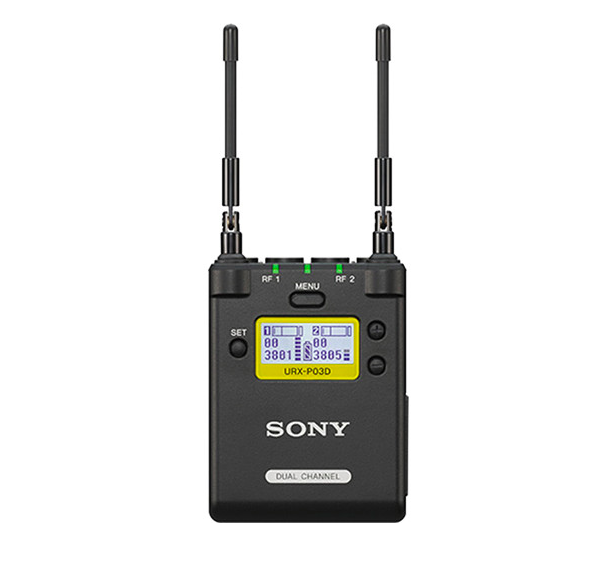
The a6700 can utilize a range of compatible accessories.
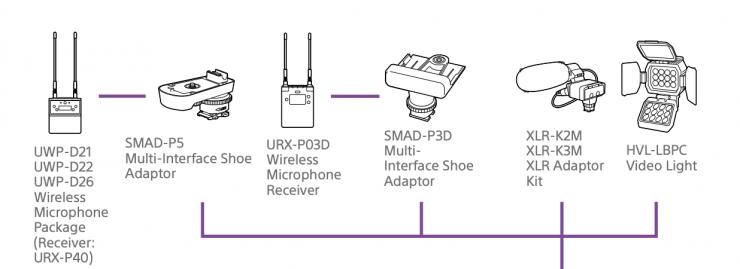
These include compatibility with the new UWP-D series of wireless microphones via Multi-Interface Shoe (MI Shoe) with digital audio interface.
Price & Availability
At $1,399 USD the a6700 is pretty competitively priced for an entry-level mirrorless hybrid. As a comparison, the FX30 costs $1,798 USD.
$1,399 USD seems to be a reasonable price given its feature set. Considering its capabilities and features I don’t think anyone should be complaining about the price. We are spoilt these days, and what you can get for a relatively small amount of money is impressive.
So how does the price compare to some other cameras? Below you can see:
| PRICE | |
| Sony a6700 | $1,399 USD |
| Sony FX30 | $1,798 USD |
| Sony FX3 | $3,898 USD |
| Sony a7S III | $3,498 USD |
| Canon R7 | $1,399 USD |
| FUJIFILM X-H2 | $1,999 USD |
| FUJIFILM X-S20 | $1,299.95 USD |
| Panasonic S5 II | $1,997 USD |
| Panasonic S1H | $3,497.99 USD |
| Blackmagic BMPCC 6K G2 | $1,595 USD |
| Blackamgic BMPCC 6K Pro | $2,535 USD |
Where does this camera sit?
Whether you love Sony cameras or loathe them, the Japanese company has always priced its mid to lower-end cameras fairly aggressively.
The a6700 does appear to be a slightly dumbed-down version of the FX30, however, it does feature a lot of the same features and functionality.
I don’t think anyone who bought an FX30 will be angered by this announcement, because if you are looking for more of hybrid mirrorless APS-C option with an EVF, then the a6700 makes more sense than an FX30.
People may be asking why it doesn’t shoot in resolutions over 4K, but in my personal opinion, it doesn’t need to. A large proportion of people buying and using cameras in this price range are not being requested to shoot in resolutions above 4K. 4K is still perfectly acceptable and will still be for quite some time. Besides, if you do need more than 4K then there are plenty of other cameras on the market that will meet your requirements.
Shotgun Microphone ECM-M1
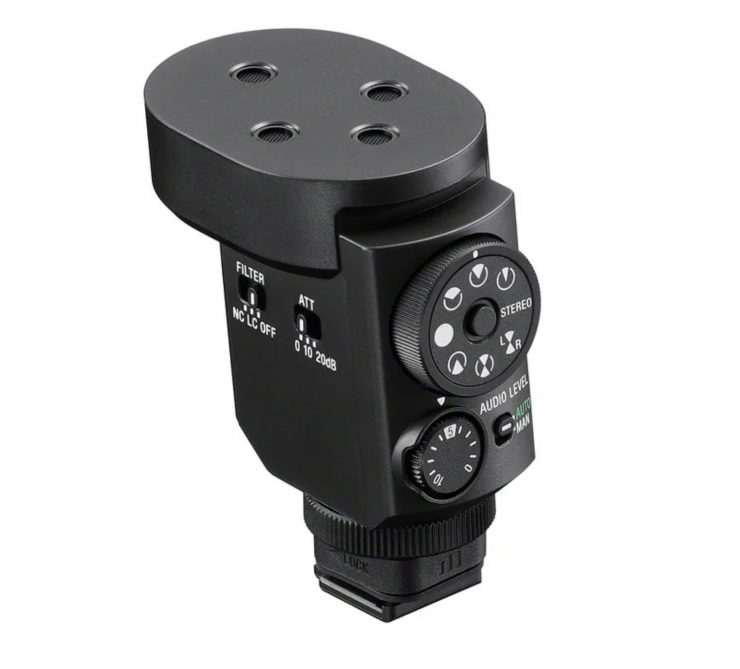
The ECM-M1 is the world’s first shotgun microphone with eight dial-selectable audio recording models. With 4 microphone capsules and unique beamforming and advanced digital processing technology, it offers varied modes including stereo. Its ultra-directional mode captures targeted sound from the front (within a 30-degree width) and at the same time effectively suppresses other sounds, dynamically adapting to ambient sound in the surroundings. This mode is ideal for interviews and selfie-oriented scenarios where the subject is always in front of the microphone.
A newly added mode dial with a locking mechanism ensures easy, secure switching of sound pickup modes. The ECM-M1 features noise reduction utilities like a noise cut filter for reducing background noise and a low-cut filter for minimizing vibration and low frequency noise. These filters are implemented through digital signal processing, maximizing audio quality at the recording stage and thereby reducing the need for complex post processing. It also supports 4-channel recording (compatible cameras only), allowing safety recording in omnidirectional mode on channels 3 and 4, while channels 1 and 2 focus on selected directivity.
Compact and lightweight, the ECM-M1 enhances mobility, empowering creators to capture high-quality audio in diverse situations. Simply clip the microphone into the Multi Interface Shoe on a compatible camera for direct power and audio connections without the need for extra cables or batteries. When connected via the Multi Interface Shoe of a compatible camera that features a built-in digital audio interface, the audio signal is directly transferred to the camera in digital form so that no degradation can occur. A simple switch also provides compatibility with a wide range of cameras using an analog interface.
The ECM-M1 retails for $349.99 USD.
Protecting your Line-up
The days of protecting your line-up have arguably disappeared. Historically, Sony always stayed away from offering features in mirrorless cameras and lower-end digital cinema cameras that you would find in their more expensive offerings. This ultimately left a lot of people frustrated and disappointed, but times have changed, and that is no longer the case, well at least to a certain extent. You are not going to get internal RAW recording or anamorphic shooting modes in a hybrid mirrorless, especially since Sony doesn’t even offer this in the FX6 or FX9.
You could have very well argued that when Sony created the FX3 it was a camera that they already had. The FX3 did initially overlap with the a7S III to the point where it upset people who bought that camera. However, with the Version 2.00 firmware update, I think the FX3 finally started to feel more like it belonged in the Cinema Line instead of the alpha line.
The FX30, at least in my opinion, probably stepped on a few of the FX3’s toes, but not all of them. As it was a much more affordable camera and utilized an APS-C sensor, it differentiated itself enough from the FX3.
The worry for any manufacturer (and this goes for just about any industry) is that if you put the same high-end features from a more expensive model into a lower-end model you could end up hurting sales. If Tesla put the same features from an S series into a Model 3 series and then sold that car for a lot less money, no one would buy the S series.
Yes, the a6700 does share some common features with the FX30, but it arguably has enough differences when it comes to the feature set and price to warrant its existence.

